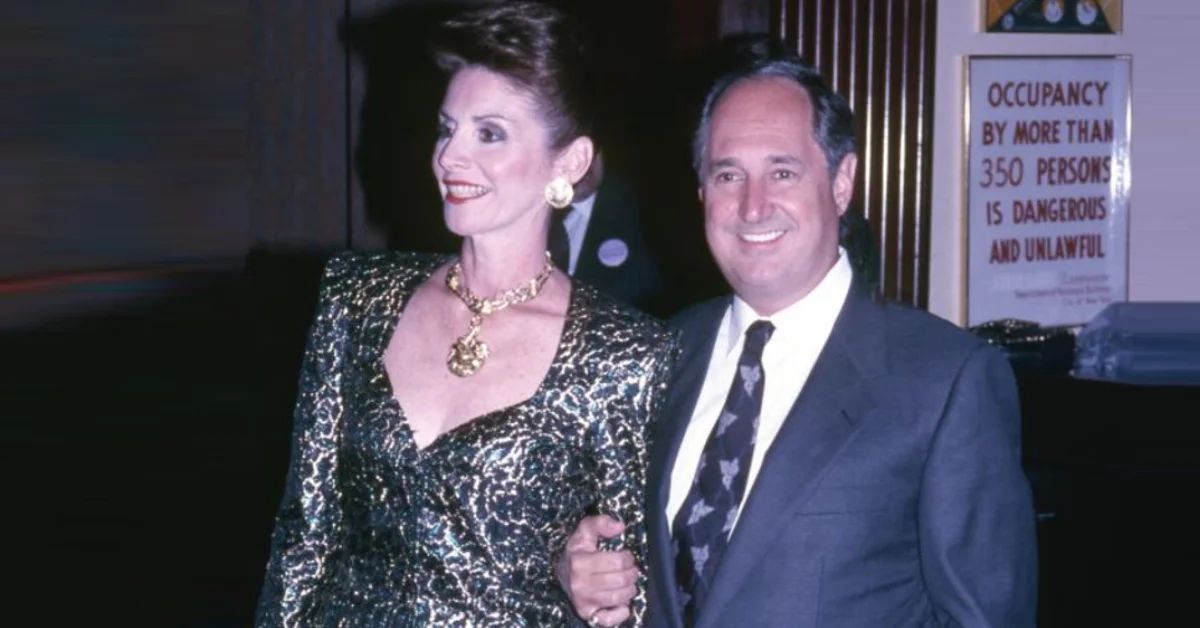Neil Sedaka stands tall among music’s greatest songwriters, with a career spanning over six decades. His timeless hits like “Oh! Carol” and “Breaking Up Is Hard to Do” continue to resonate with audiences across generations. But just how successful has his musical journey been financially?
Let’s explore the remarkable wealth of this piano-playing pop icon and songwriter extraordinaire.
Neil Sedaka Net Worth
Neil Sedaka’s net worth in 2025 sits at an impressive $370 million, making him one of the wealthiest musicians of his era. This figure represents a significant jump from earlier estimates, which often ranged between $100 million and $250 million. The dramatic increase stems primarily from his 2024 catalog sale to Primary Wave, which substantially boosted his already impressive fortune.
Many wonder why different sources report such varying figures about Sedaka’s wealth. The answer lies in timing and accounting methods. Older reports failed to factor in his recent catalog deals, ongoing royalty streams, and smart investments over decades. Additionally, some sources only calculate liquid assets while others include property values, business interests, and future royalty estimations.
What’s undeniable is that Sedaka’s fortune puts him in an elite category among musicians of the 1950s and 60s who managed to maintain control of their work and benefit from it financially throughout their lives.
Who is Neil Sedaka?
Born in Brooklyn, New York on March 13, 1939, Neil Sedaka showed musical promise from an early age. His parents recognized his talent and enrolled him in the Juilliard School of Music, where he trained as a classical pianist. This formal education would later blend with his love for pop music to create his distinctive sound.
Sedaka’s professional music career began in the late 1950s, when he partnered with Howard Greenfield to write songs. Their collaboration proved incredibly fruitful, producing numerous hits for Sedaka himself and many other artists.
The 1960s saw Sedaka reach impressive heights with songs like “Calendar Girl,” “Happy Birthday Sweet Sixteen,” and his signature tune “Breaking Up Is Hard to Do.” This period laid the groundwork for his financial success, though the real wealth would come later through careful management of his catalog and rights.
Despite facing a career slump in the late 1960s as musical tastes shifted, Sedaka staged one of music’s most remarkable comebacks in the mid-1970s. With help from Elton John, who signed him to his Rocket Record label, Sedaka returned to the charts with hits like “Laughter in the Rain” and a reworked, slower version of “Breaking Up Is Hard to Do” – making him one of the few artists to hit #1 with the same song twice, in completely different arrangements.
Royalties, Tours, and Catalog Sales
What truly sets Sedaka apart from many musicians of his era is his business acumen. His wealth stems from multiple revenue streams carefully built over decades:
1. Songwriting Royalties
Unlike many artists who merely performed songs written by others, Sedaka co-wrote most of his hits. This crucial distinction means he collects both performance and songwriting royalties. Over the decades, his songs have been recorded by artists ranging from Elvis Presley to Clay Aiken, generating consistent income.
The full scope of Sedaka’s songwriting catalog is staggering – he’s credited with writing or co-writing over 500 songs. Each time one of these songs plays on radio, streams online, appears in a film, or gets covered by another artist, royalty payments flow his way.
2. Record Sales and Performances
Sedaka sold millions of records during his career peaks in both the late 1950s/early 1960s and again in the 1970s. While record sales don’t generate the income they once did, his catalog continues to sell through reissues and compilation albums.
He also maintained an active touring schedule well into his 80s (only recently slowing down), commanding premium ticket prices as a nostalgia act beloved by baby boomers. These performances, often at casinos and performing arts centers, provided substantial supplemental income.
3. The Primary Wave Deal
The most significant boost to Sedaka’s net worth came in late 2024, when he sold a significant portion of his music catalog to Primary Wave, a company that specializes in acquiring music rights. While the exact figure hasn’t been publicly disclosed, industry insiders suggest the deal valued his catalog at well over $100 million.
This type of deal has become increasingly common among legendary musicians looking to cash in on their life’s work while interest rates remain relatively low and music catalogs are highly valued by investment firms.
4. Smart Investments
Beyond music, Sedaka made savvy property investments in New York and California. These real estate holdings have appreciated significantly over decades, contributing to his overall wealth. He’s maintained homes in both Manhattan and Los Angeles, properties that have multiplied in value many times over.
Age, Family, and Legacy

At 86 years old in 2025, Neil Sedaka has lived a life that balances professional success with personal stability. He married his wife Leba in 1962, and their union has lasted over six decades – a rarity in the entertainment world. The couple has two children: daughter Dara, who became a recording artist herself, and son Marc, who pursued a career outside the music industry.
This family stability likely contributed to Sedaka’s financial success by providing a grounding influence amid the music industry’s notoriously chaotic environment. Unlike many of his contemporaries who lost fortunes to excessive spending or poor management, Sedaka maintained relatively conservative financial habits.
His legacy extends beyond wealth. Sedaka’s contributions to pop music earned him a star on the Hollywood Walk of Fame and induction into the Songwriters Hall of Fame. His compositions have become part of the American songbook, and his influence extends to generations of singer-songwriters who followed him.
Why Neil Sedaka’s Net Worth Matters?
Sedaka’s financial story represents more than just numbers – it demonstrates the long-term value of artistic ownership and business savvy in the music industry. In an era when many musicians struggle to monetize their work, his success provides several important lessons:
First, ownership matters tremendously. By maintaining control of his publishing and master recordings when possible, Sedaka positioned himself to benefit from long-term revenue streams rather than quick payouts.
Second, diversification proved crucial. By writing for other artists, performing regularly, and investing outside music, he created multiple income sources that could sustain him through industry changes.
Third, adaptation kept him relevant. When his career faltered in the late 1960s, he reinvented his sound rather than fading away. This resilience allowed him to capitalize on new opportunities in the 1970s and beyond.
In 2025, his music enjoys renewed interest through streaming platforms introducing his catalog to younger listeners. Songs like “The Immigrant” have found new relevance in contemporary discussions about immigration and tolerance, bringing fresh attention to his work.
The Primary Wave deal also highlights the growing trend of investment firms recognizing the stable value of classic music catalogs as financial assets. As streaming continues to grow globally, the rights to popular songs from past decades represent reliable income streams attractive to investors looking for alternatives to traditional markets.
How Does Neil Sedaka’s Wealth Compare to Others?
When comparing Sedaka’s financial success to others from his era, his $370 million net worth places him among the upper echelon of 1950s and 60s pop stars. While he hasn’t reached the billionaire status of figures like Paul McCartney, he’s done remarkably well compared to many contemporaries.
Several factors explain his stronger financial position:
- His role as both performer and songwriter doubled his revenue potential compared to artists who only performed.
- He avoided the financial pitfalls that plagued many musicians, including excessive spending, poor management, and unfavorable contracts.
- He strategically timed his catalog sale during a period when music rights were being valued at historic highs.
- His songs maintained cultural relevance across multiple decades, ensuring steady royalty income.
Many of his contemporaries from the late 1950s either passed away before seeing the full financial value of their work or sold their rights too early for much lower amounts than they would be worth today.
What does the future hold for the value of Sedaka’s work? Music industry analysts suggest that classic catalogs like his will likely continue appreciating in value as global streaming expands into new markets. The universal appeal and recognition of songs like “Breaking Up Is Hard to Do” make them valuable assets across cultural boundaries.
Additionally, the use of classic songs in films, television, and advertising continues to generate substantial licensing fees. As new entertainment platforms emerge, the demand for proven, recognizable music tends to increase rather than decrease.
For the portion of his catalog retained by Sedaka or his heirs, the future value depends largely on how effectively his music gets introduced to new generations and platforms. Songs that find new cultural relevance or get featured in viral moments can see sudden spikes in streaming revenue.
What Can We Learn from Neil Sedaka’s Financial Journey?
The financial story of Neil Sedaka offers valuable lessons that extend beyond the music industry:
The power of intellectual property: Creating and owning intellectual property can generate income for decades, far outlasting most traditional careers.
The importance of reinvention: Sedaka’s ability to adapt his sound and find new audiences in the 1970s extended his earning potential by decades.
The value of business understanding: Unlike many artists who focused solely on creativity, Sedaka developed enough business acumen to make smart decisions about his career and finances.
The benefits of longevity: By maintaining his health and continuing to perform well into his 80s, Sedaka extended his earning years far beyond the typical career span.
Perhaps most importantly, his story demonstrates that artistic and commercial success need not be mutually exclusive. By creating beloved songs that stand the test of time, Sedaka built both a cultural legacy and an impressive fortune.
Final Thoughts
Neil Sedaka’s journey from a piano prodigy in Brooklyn to a $370 million net worth represents one of music’s great success stories. Through talent, persistence, adaptability, and smart business decisions, he transformed his musical gifts into lasting financial security.
As we look at his career in 2025, Sedaka stands as an example of how artists can maintain control of their creative output and benefit from it throughout their lives. His catalog sale to Primary Wave represents not the end of his legacy but a new chapter in how his music will reach future audiences.
For fans wondering about the man behind hits like “Calendar Girl” and “Laughter in the Rain,” understanding his financial success adds another dimension to appreciating his contributions to popular music. The $370 million figure attached to his name today reflects not just commercial success but decades of artistic relevance that continues to resonate with listeners around the world.
What’s your favorite Neil Sedaka song? Has his music been part of the soundtrack of your life? The lasting power of his melodies and lyrics continues to bring joy to millions – proving that his true legacy extends far beyond any dollar figure.
